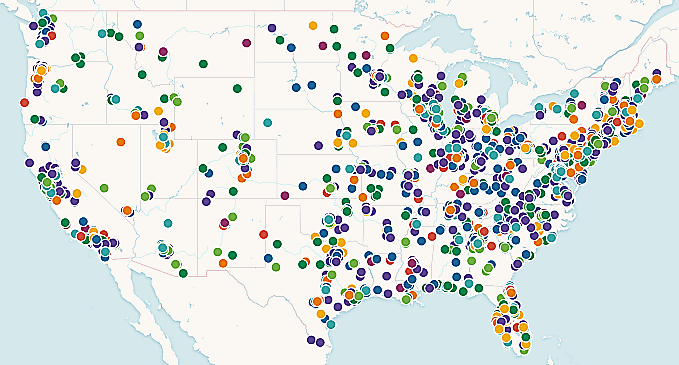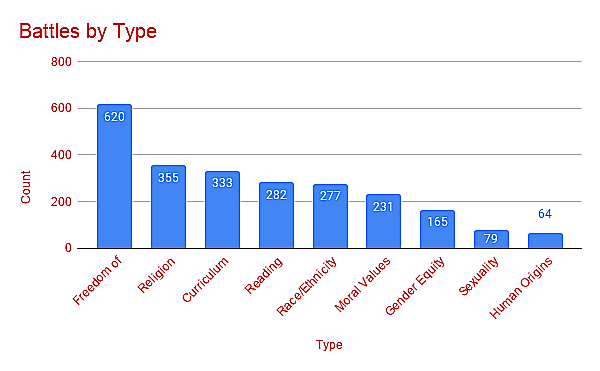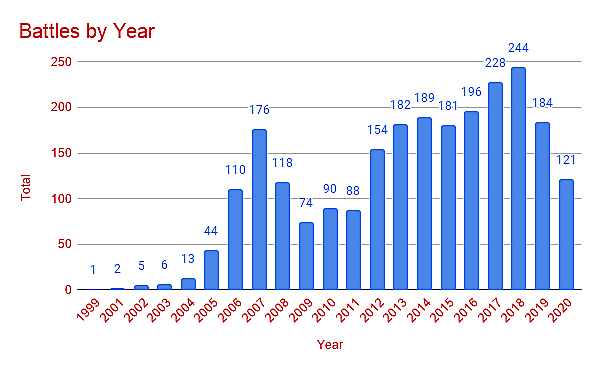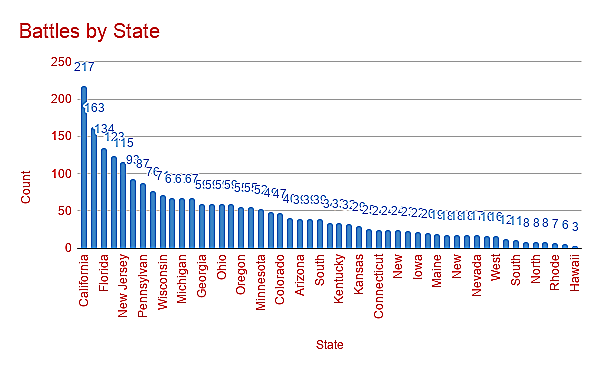It is probably fair to say that Americans are highly polarized right now. Public schooling is likely a reflection of, and contributor to, that division. A reflection, because political control of schools is likely to replicate the divisions and animosities of the electorate. A cause, because public schooling requires people with diverse views and backgrounds to engage in political combat to determine whose values, views on history, and more, will be taught.
Cato’s Public Schooling Battle Map catalogues values and identity-based conflicts – highly personal battlegrounds versus, say, fights over school budgets – in public schools. We started documenting such conflicts in the 2005-06 school year, but it was a few years later that we started regular, consistent collection and launched the Map. What follows is a basic summary of what the Map contains.
Note that the Map almost certainly under counts conflicts, perhaps significantly. Entries are only obtained from searches of media reports. That means the Map does not include (1) any battles that generate media reports we do not see, (2) battles that occur but receive no media coverage, and (3) people who feel aggrieved by school policies or curricula but do not challenge them in open forums. Also, the years reflect when a conflict began. Years before 2006 with very few battles contain only conflicts we discovered in later years but that originated in those years.
Battle Types
Battles are divided into nine types, with all involving sides that have reasonable, yet opposed, concerns. Note that many battles could fit under several categories – we choose the one that seems most central. For instance, a battle over a valedictorian mentioning God in a graduation speech could fall under “freedom of expression” or “religion,” but would typically be classified under “religion” because it is the religious nature of the expression that is at the heart of the conflict.
- Freedom of expression: Conflicts typically pitting the speech rights of students against schools’ need to maintain order and create coherent cultures
- Religion: Conflicts that pit explicitly religious values or expressions against school policies that are often aimed at remaining religiously neutral
- Curriculum: Conflicts over what is taught based on disagreements about propriety or accuracy. These can include conflicts over morally controversial topics such as sex education if the objections are not explicitly religious or moral, such as age inappropriateness
- Reading Material: Conflicts over books that are present in school libraries, on reading lists, or assigned for classes
- Race/Ethnicity: Conflicts over the ability of people of different races or ethnicities to control their own schools or obtain instruction or treatment tailored to their group. Does not include accusations of racism or unequal treatment unless schools maintain that they have the disputed policies for arguably laudable reasons, such as remaining colorblind
- Moral Values: Conflicts over what is “right” and “wrong” without an explicit religious connection, such as over corporal punishment or condom distribution
- Gender Equity: Conflicts over the treatment of students by gender, including debates about proper attire for girls, and bathroom access policies for transgender students
- Sexuality: Conflicts specifically about sexual behavior or orientation
- Human Origins: Conflicts over the teaching of how life originated, and how it reached its current form. Typically involve evolution and creationism or intelligent design theory
Total Battles
2,406
By Type
By Year
By State
Total Districts with Battles
1,205
State-level Battles
375
Summary
Whether values and identity-based conflict in public schooling has been increasing or decreasing is unclear. Many factors play into what the Map contains, including COVID-19 dominating education policy debates in 2020, and changing collection intensity after the Map’s early years. But one thing is clear: public schooling does not simply bring diverse people together and make them a harmonious whole. It is the arena – and quite possibly the cause – of much social conflict.




